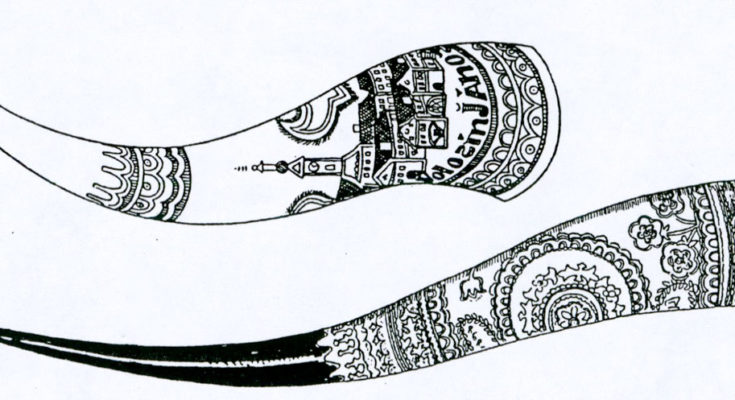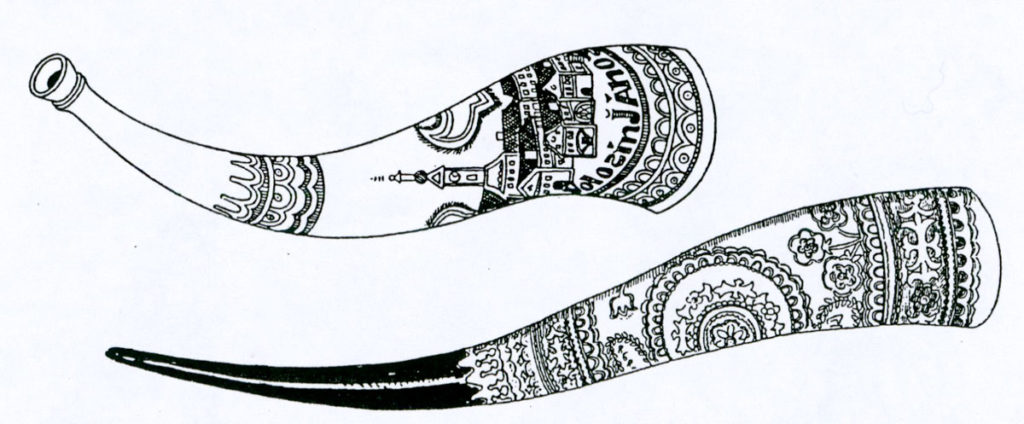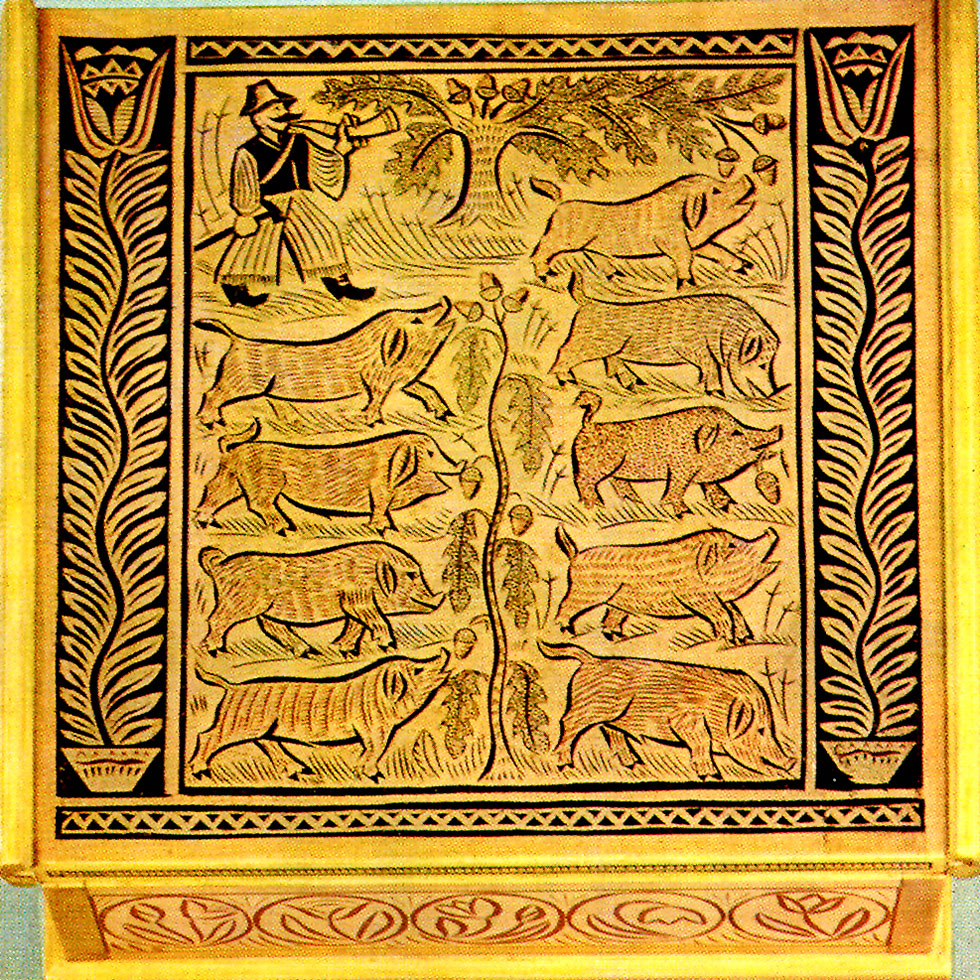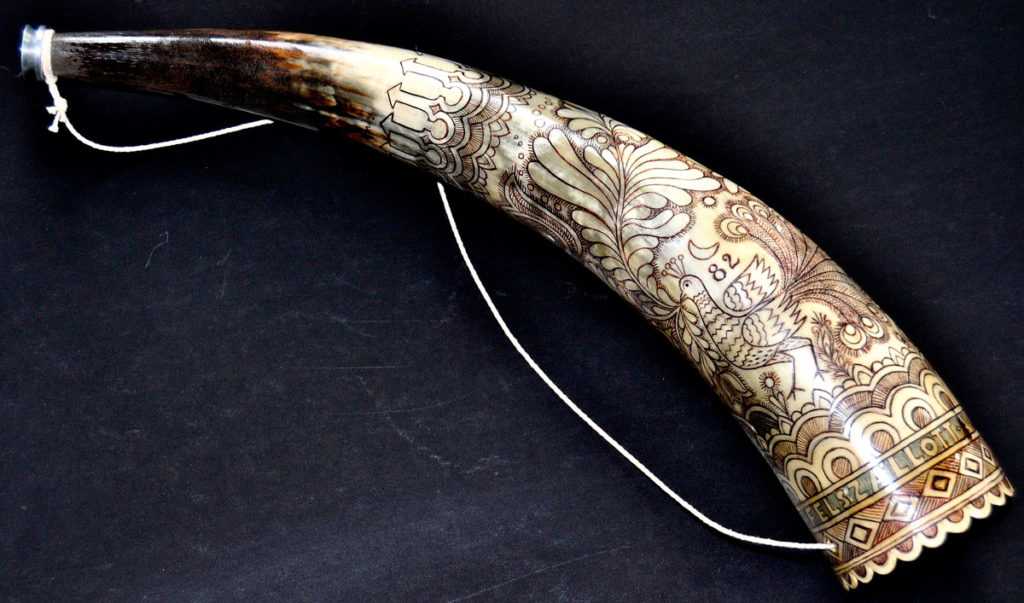BUGLE, SHEPHERD’S HORN (kürt, pásztortülök)
Ancient Hungarians used the horn as a signaling device and also as a symbol of dignity. The swineherd’s horn was made from the 80 cm long horn of the Hungarian grey cattle. In some regions the herdsmen decorated their instrument. The horns produce an extraordinarily high tune.
The wooden bugle is called a bugle (kürt) by the Székelys, and a water pipe (víziduda) by the folk of the Great Plain. They are from 50 to 200 cm long and are made of pine, poplar, birch or elder wood. In Transylvania the bark of the linden tree is also used. Both bugles had to be soaked in water for a good sound.
The horns and bugles were used by fishermen, millers, rafters, sailers for signaling, and by herdsmen to scare off wild animals. Accord ing to folk tradition the custom of noisemaking is a remnant of ancient rituals of cleansing, keeping sickness and enemies away. Bugles were also used to salute the New Year and Spring or simply to chat with far away neighbors on quiet evenings.






